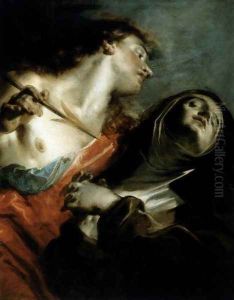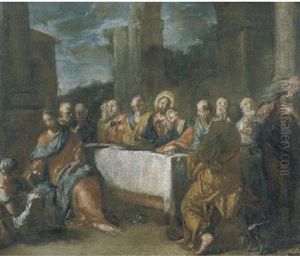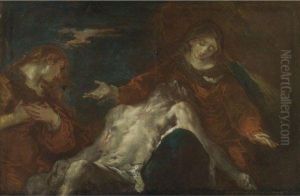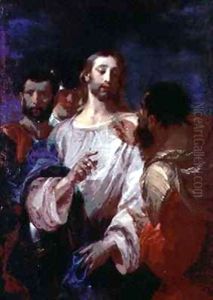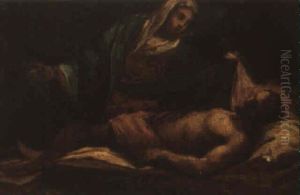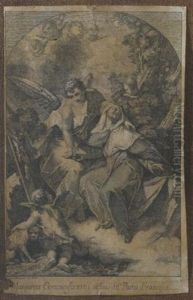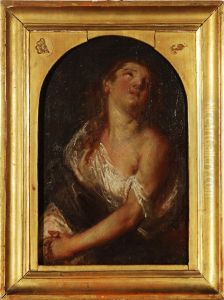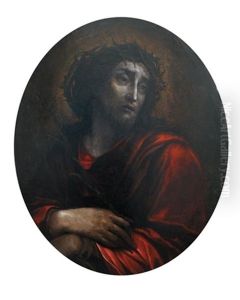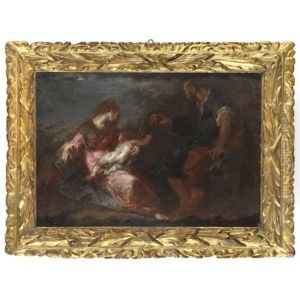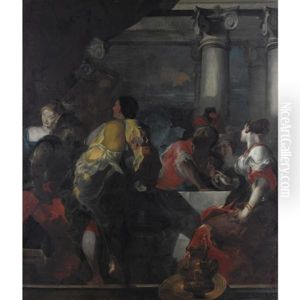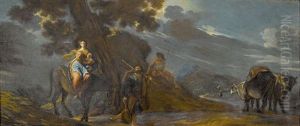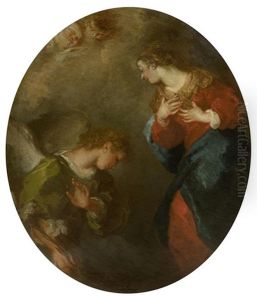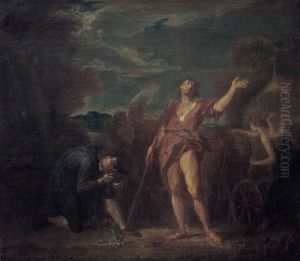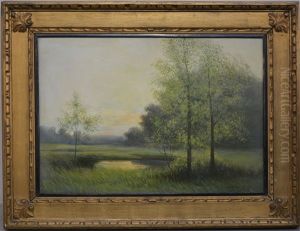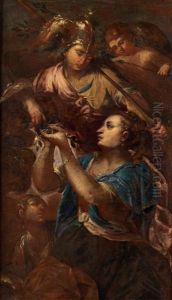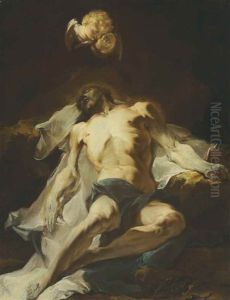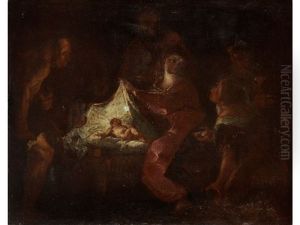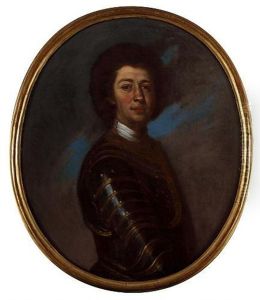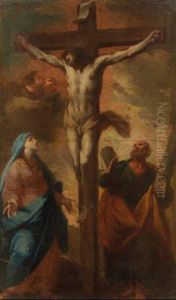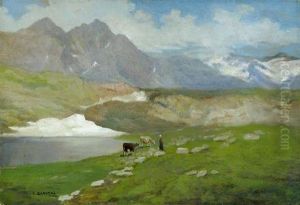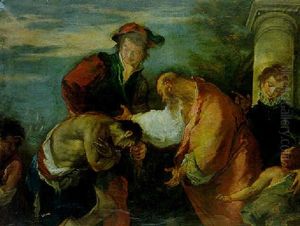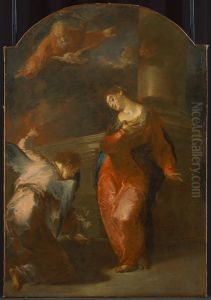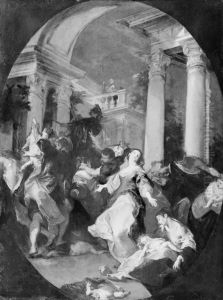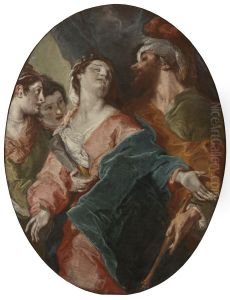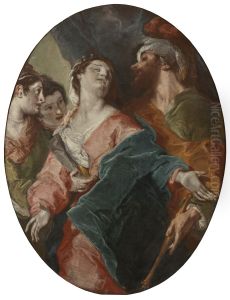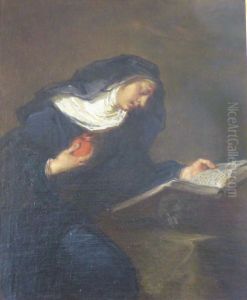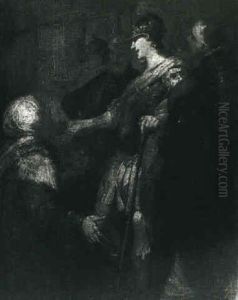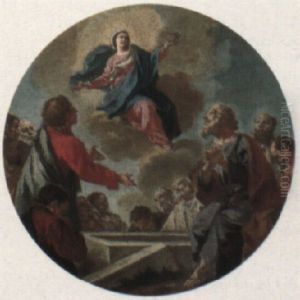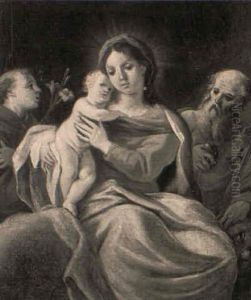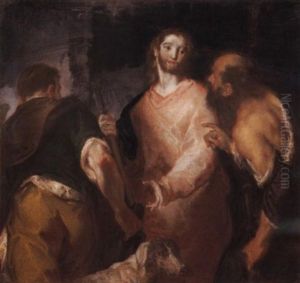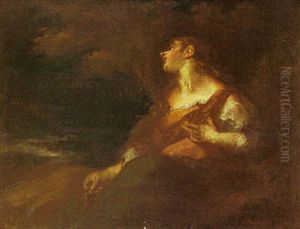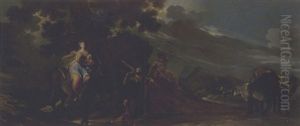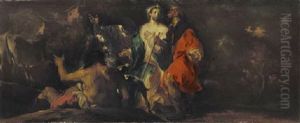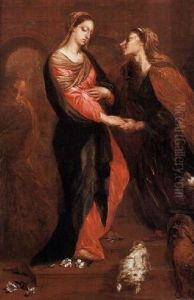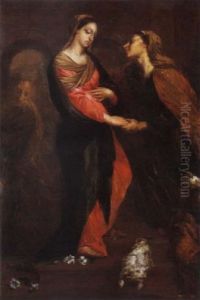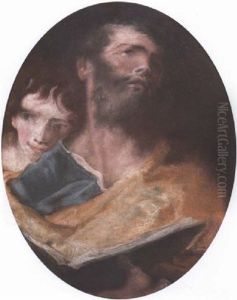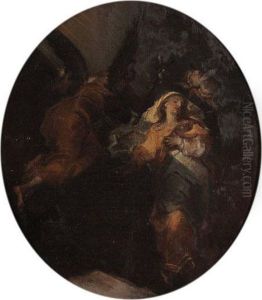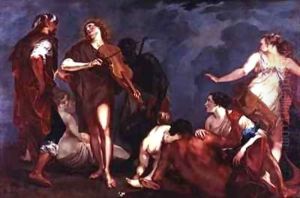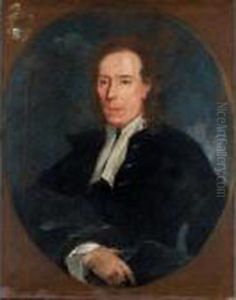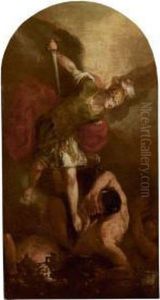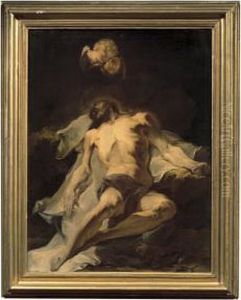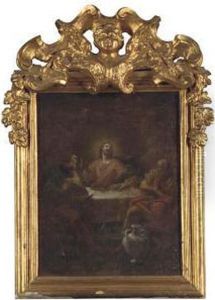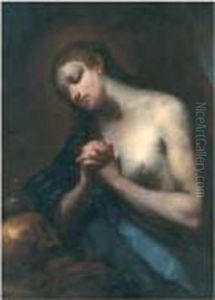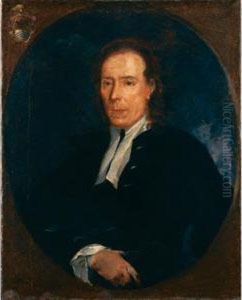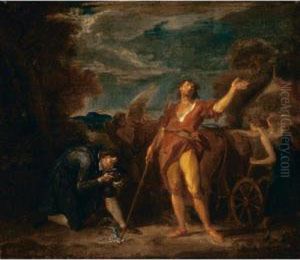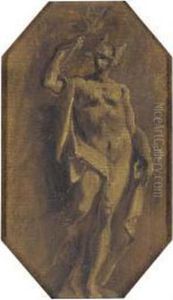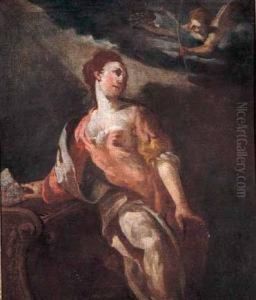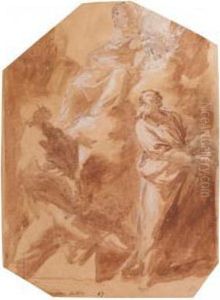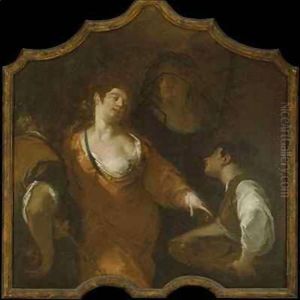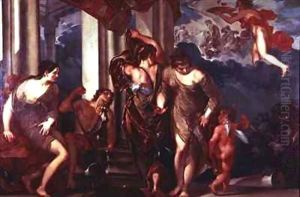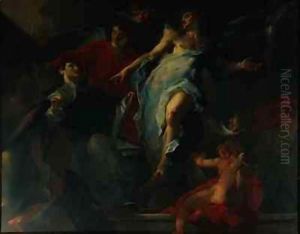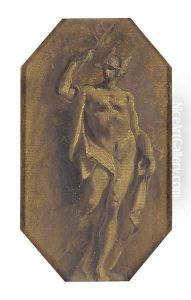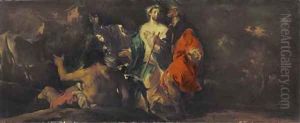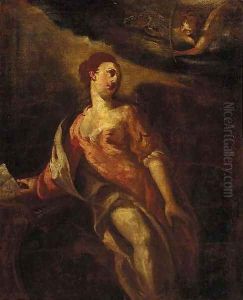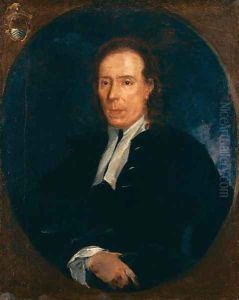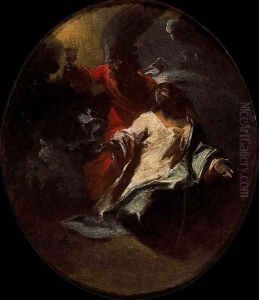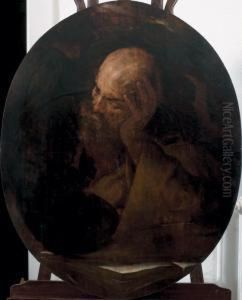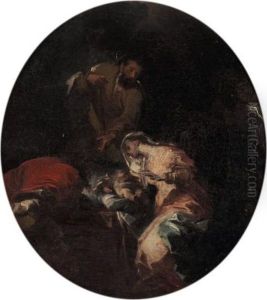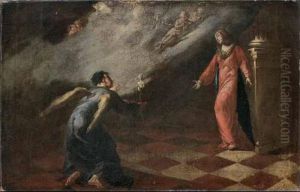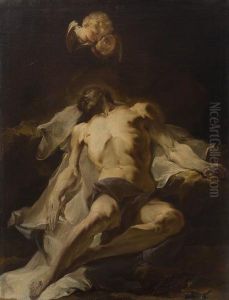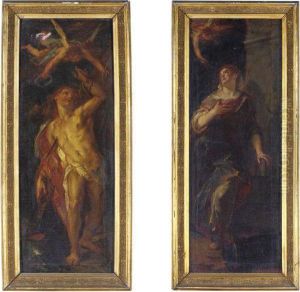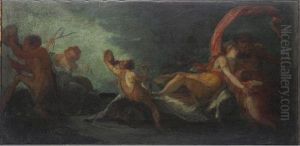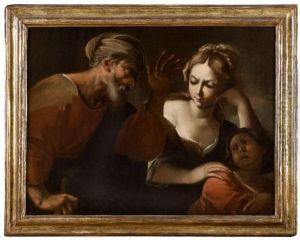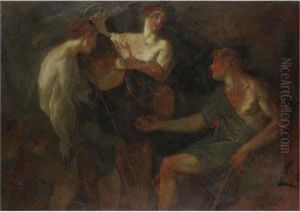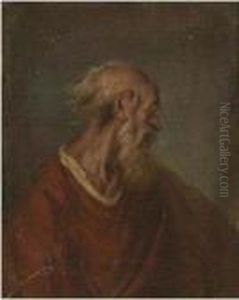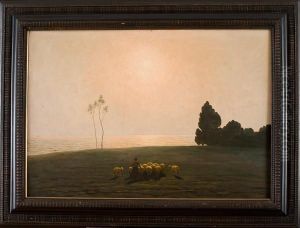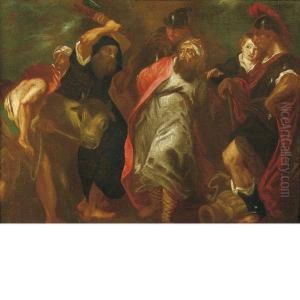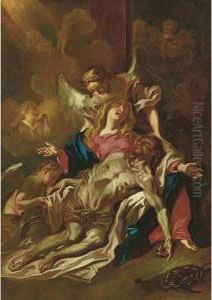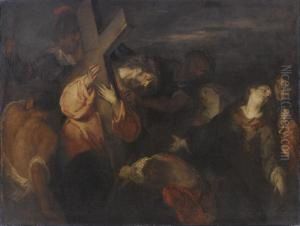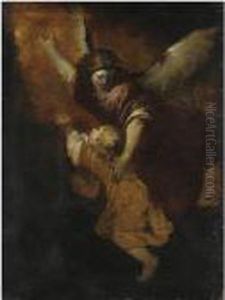Giuseppe Bazzani Paintings
Giuseppe Bazzani was an Italian painter of the Baroque period, born in Mantua, Lombardy, in 1690. He is primarily known for his religious and mythological works, as well as for his contribution to the decoration of local churches and buildings in his hometown and surrounding areas. Initially trained by his father, who was also a painter, Bazzani's early works show the influence of the local Mantuan school of art, which was at the time still under the spell of the late Renaissance artist Andrea Mantegna.
Bazzani's style, however, evolved significantly throughout his career. After his early training, he was influenced by the works of prominent artists such as Correggio and Raphael. He became particularly adept at using light and color to create vibrant, dynamic compositions. His paintings are characterized by their lively figures and rich, detailed drapery.
In the 1720s, Bazzani traveled to Rome, where he was exposed to the works of the High Baroque masters. This experience further shaped his artistic style, leading to a more dramatic use of chiaroscuro and a greater emphasis on emotional expressiveness in his work. Upon returning to Mantua, he became a leading artist in the city and was commissioned to work on various projects, including the fresco decoration of the church of Sant'Andrea.
Throughout his career, Bazzani also became involved in the administration of the arts in Mantua. He was one of the founding members of the Accademia di Belle Arti di Mantova (the Academy of Fine Arts of Mantua), where he served as a director. This institution played a key role in the cultural life of the city and helped to promote the arts and education in the region.
Giuseppe Bazzani died in Mantua in 1769. Despite being relatively lesser-known compared to the dominant figures of the Italian Baroque, Bazzani's work remains significant for its quality and for his role in the continuation of the artistic tradition in Mantua during the 18th century. His paintings can be found in various churches and museums throughout Italy, and they continue to be studied for their contribution to the Baroque style.
